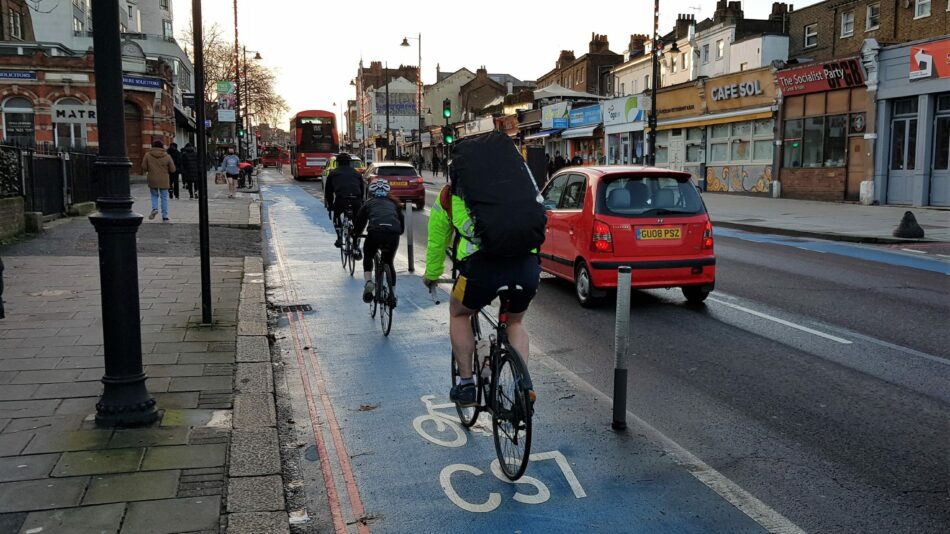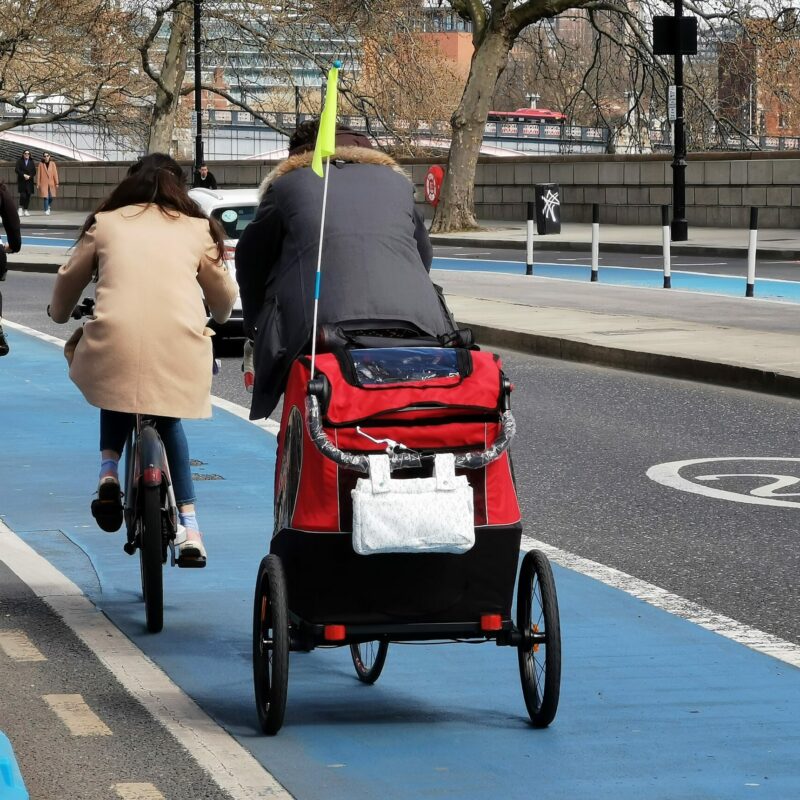

The Highway Code has been updated with new rules in effect from January 29th. The Code includes a number of very welcome new rules that are aimed at reducing road danger to vulnerable road users such as pedestrians and cyclists in particular and also improve considerate behaviour by all road users.
Giving way to people proceeding straight on at junctions; stopping for pedestrians waiting to cross; not injuring cyclists by opening doors into them are all rules that are both common sense and were implied in the old Highway Code but now are explicit and, importantly, can be more easily raised in any civil legal proceedings that follow a road collision.
No one wants collisions to take place. In London with its dense network of streets and high traffic levels, understanding, and adherence to, the new rules has the potential to reduce the number of collisions on our roads with benefits for everyone.
The new rules provide formal advice to road users though they do not create new offences, which would require primary legislation. Lawyer Stuart Kightley, of LCC’s legal partner, Osbornes, explains:
“These new rules and amendments use the word ‘should’ in relation to driver behaviour around cyclists. Breaching of a ‘must’ rule is an offence; breaching of a ‘should’ rule will be taken into account in any civil proceedings. The code’s new hierarchy principle, the ‘priority’ provisions and the specific rule changes will all be relevant and very helpful in establishing the duty, and the breach of duty, by drivers in any subsequent legal action.”
The new rules cover more than the key points below, notably measures designed to protect pedestrians – a link to the full text is provided at the bottom.
For London riders perhaps the most important new rule is that turning vehicles are advised to give way to walkers and cyclists proceeding straight on. This principle was included in the old HC rules 170, 182 and 183 but now it is very clearly stated and we should expect, over time, that collisions resulting from so called ‘left hooks’ will fall in number as drivers follow their Dutch counterparts and give way when turning, including, we hope, at both signalised and side road junctions, collision hotspots etc.
LCC strongly supported this rule, which reduces danger for pedestrians and riders using cycle tracks as they cross the mouths of junctions. In London, many side street crossings are now raised to emphasise to drivers that they should give way and we’re seeing some boroughs roll out ‘continuous’ or ‘blended’ side street crossings where the pavement continues across the junction to reinforce who has priority.
Some will remember the tragic case of the cyclist killed in Holloway Road when a driver in a parked car opened a door and knocked him into the path of a following vehicle. The new Highway Code rule advises passengers and drivers to open car doors, when getting out, with the opposite hand to the door so as to encourage a backward look and preventing ‘dooring’ collisions. It’s called the ‘Dutch reach’, for obvious reasons, and was advocated strongly by Cycling UK.
Contrary to some tabloid headlines the rule doesn’t mean opening a door incorrectly means a fine, but if a collision is the result and injury occurs then the lack of forethought can be brought up in legal proceedings.
Underpinning the new Highway Code rules is the freshly introduced ‘Hierarchy of Road Users’. This establishes an inverted pyramid of road users with those that can cause the greatest degree of harm in a collision at the bottom, giving them greater responsibility to take care, and those who are most vulnerable, pedestrians, horse riders and cyclists, at the top, giving them greater protection while also advising them to take care of those above them in the hierarchy.
Anyone who has been on a Bikeability course, a government approved programme, will know that cyclists are advised to be in the so-called ‘primary position’, or middle of the inside lane, ahead of side streets and on narrow roads. Riders are advised to then move over when it is safe to do so. This common sense advice which deters passing vehicles from cutting in on riders as they turn is now formally presented in the Highway Code and helps drivers understand why cyclists follow this defensive strategy.
The old Highway Code said motorists should allow that same passing distance for a cyclist as they would for a car. This was often ignored or considered unclear so the new rules provide more specific advice: “leave at least 1.5 metres when overtaking cyclists at speeds of up to 30mph, and give them more space when overtaking at higher speeds.”
In London the Met police hold “close passing” sessions where they caution or fine drivers who endanger cycle users. The new advice should make it very clear to drivers that 1.5 metres is the minimum passing distance.
The old Highway Code treated cyclists as what’s been described as “incidental road users” rather recognising their potential as a sustainable and healthy transport mode. LCC along with other cycling organisations like Cycling UK lobbied for changes to the Highway Code for many years and we welcome the progress that’s been made. Pedestrian organisations also support the changes, Stephen Edwards, interim chief executive of Living Streets said: “Road users who have potential to cause the greatest harm should take the greatest share of responsibility to reduce the danger they pose.”
The changes also have the backing of motoring representatives. RAC’s head of roads policy, Nicholas Lyes said: “These proposals should make cycling and walking safer, and this is to be welcomed. A concerted effort must now be made to communicate the changes to drivers because as we know, many do not read the Highway Code for long periods after passing their test.”
A full list of the changes to the Highway Code can be found via the link below.
KEEP UP TO DATE
